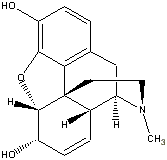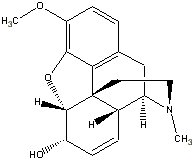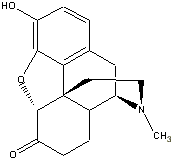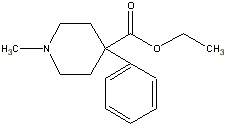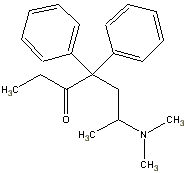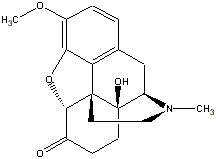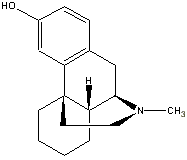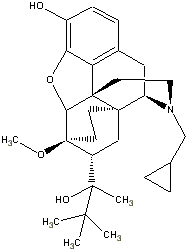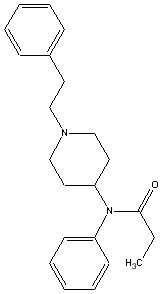|
||||||||||||||
|
||||||||||||||
|
2D Model |
Clinical
Information |
Opioid
addiction is a psychological state manifested by drug seeking behaviors
and an unnatural craving for the drug. Clinicians should not be reluctant
to give high doses of opioids to patients with advanced disease. It is
the clinician's ethical duty to benefit the patient by relieving pain
even at the risk of side effects. The clinician's fear of shortening the
patient's life by using large doses of opioids is usually unfounded.
Opioid Mechanisms of ActionOpioid receptors bind mu, delta, kappa Receptors can be found in peripheral tissue, the spinal cord, and the central nervous system. Full Morphine-like AgonistMorphine is the most commonly used opioid agent. It is available in immediate released and sustained action preparations. Other agonists are listed here. These are useful for the patient who experiences dose limiting side effects with one opioid Agonists will not reverse or antagonize the effects of other agonists given simultaneously Full agonists share a very important trait; the effectiveness of full agonists is not limited by a "ceiling effect" with increasing doses. The dose limiting factor is the development of toxicities rather than the attainment of a ceiling. The ceiling effect is the pharmacological term to describe the level of drug in the body above which no additional therapeutic effect is seen as the dose is increased; Only additional drug side effects are seen above the "ceiling". Partial AgonistThis class of agents has less effect than full agonist at the opioid receptor These agents are subject to a ceiling effect, making it less effective analgesics. Examples: buprenorphine Mixed Agonist/AntagonistThese agents block or are neutral at one type of opioid receptor while binding a different opioid receptor. Mixed agonist/antagonists Examples: pentazocine, butorphanol and nalbuphine.
|
||||||||||||
|
||||||||||||||
|
||||||||||||||
|
||||||||||||||
|
||||||||||||||
|
||||||||||||||
|
||||||||||||||
|
||||||||||||||
|
||||||||||||||
|
||||||||||||||
|
||||||||||||||
|
Note 0:
Usual Adult Dosage means, "Usual dose for adults and children > 50 kg body weight." Usual Child Dosage means, "Usual dose for adults and children < 50 kg body weight." Note 1: Relative Potency may be viewed as how the a particular substance, rendered in blue, "stacks up" in potency against a morphine standard, rendered in red. Note 2: Asingle unadorned letter "h" is the standard metric abbreviation for hour. Note 3: Ref: C. Stratton Hill; Guidelines for Treatment of Cancer Pain, Texas Cancer Council PO Box 12097 Austin Texas (512) 463-3190 Note 4: Fentanyl duration may be shorter. Frequent re-evaluation of pain control recommended. Probably best to use for stable pain and in patients not able to take oral medication. Additional narcotics must always be ordered for "breakthrough" pain when using transdermal fentanyl. Note 5:Deaths have been reported when transdermal patch was warmed via contace with a hot water bottle and excessive amounts of this extremely potent substance were absorbed transdermally. |
||||||||||||||
